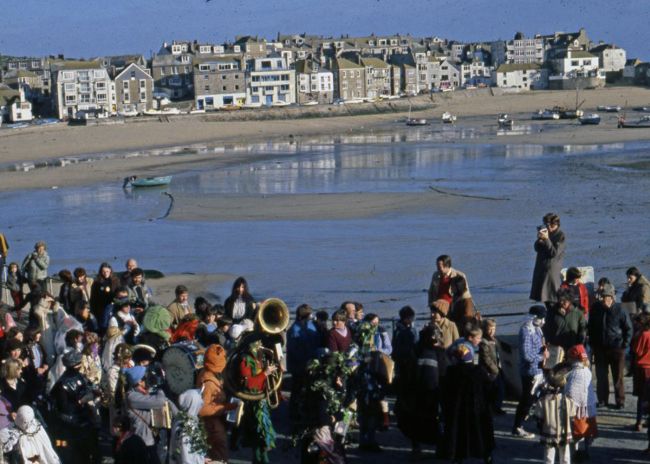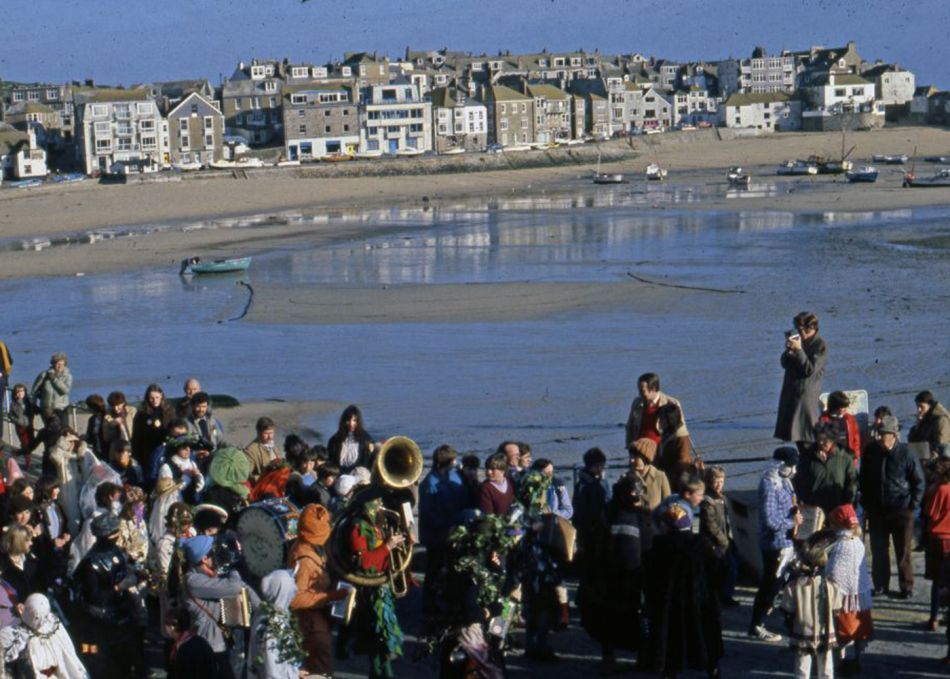There are several kinds of costume that guise dancers wear. The first is called “Mock Formal” and includes old clothes that would have been considered posh in the past. It is common to see guise dancers wearing top hats, bow ties or older formal costumes like bicorn hats. Another traditional costume style is “ribbons and tatters”. In this style, costumes are covered with bright rags and ribbons and can be extremely colourful. In some cases, people wear costumes from other cultures.
Covering the face is done in three ways. Firstly, you might use a mask. Masks used in guise dancing are often very ornate and look similar to the masks you see in the Venice Carnival or similar customs. There is also a strong tradition of using animal masks, which means you might see masks that are meant to look like goats, sheep, lions and even frogs. Secondly, some people use lace veils – often black lace – to cover their face. In the dark, this is a very effective way to hide your face. A third option is to use make up. This is particularly common in East Cornwall, where guise dancers put black on their faces.
Once the dancers have made their costumes, they perform in several ways. One of the most common performances involves traditional Cornish dances. Processions in guise dance costume are also common: St Ives had a guise dance parade in the 1920s and 1930s and Penzance has held them since 2007 as part of the Montol Festival. The most complicated of the performances is the guise play. These plays are short, funny and based on a traditional story. The subject of the play changes but St George and the Turkish Knight is a favourite. The story of Duffy and the Devil, a Cornish story of witchcraft, was also very popular once. Guise dancing is most common in and around Christmas, and sometimes takes place during parish feasts in the Cornish calendar.








